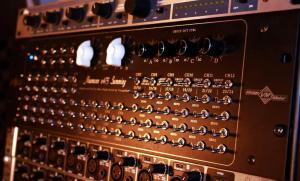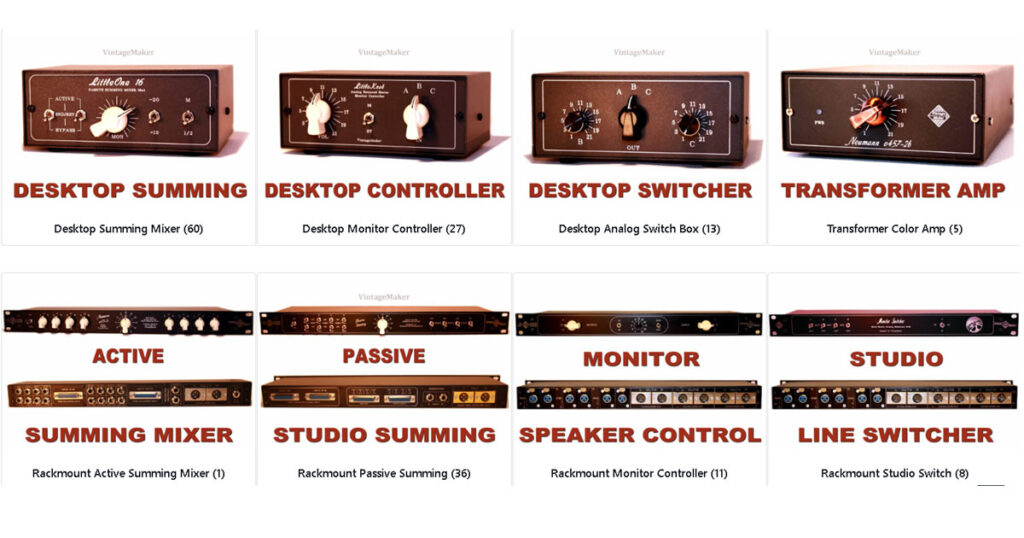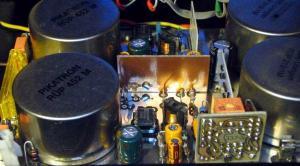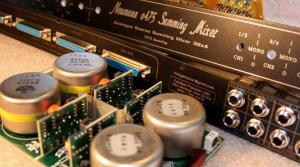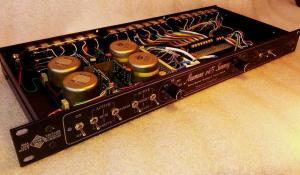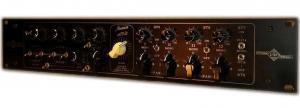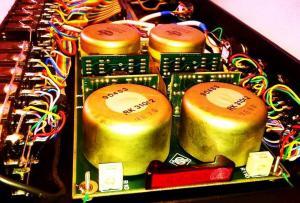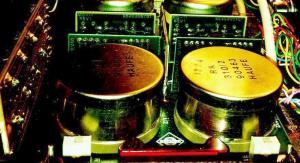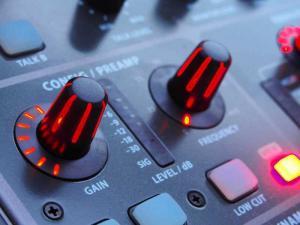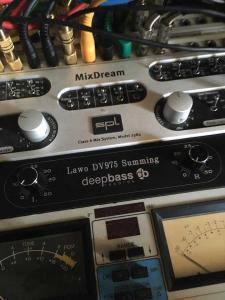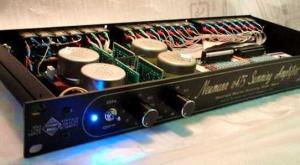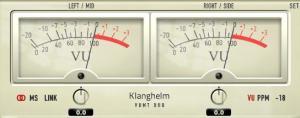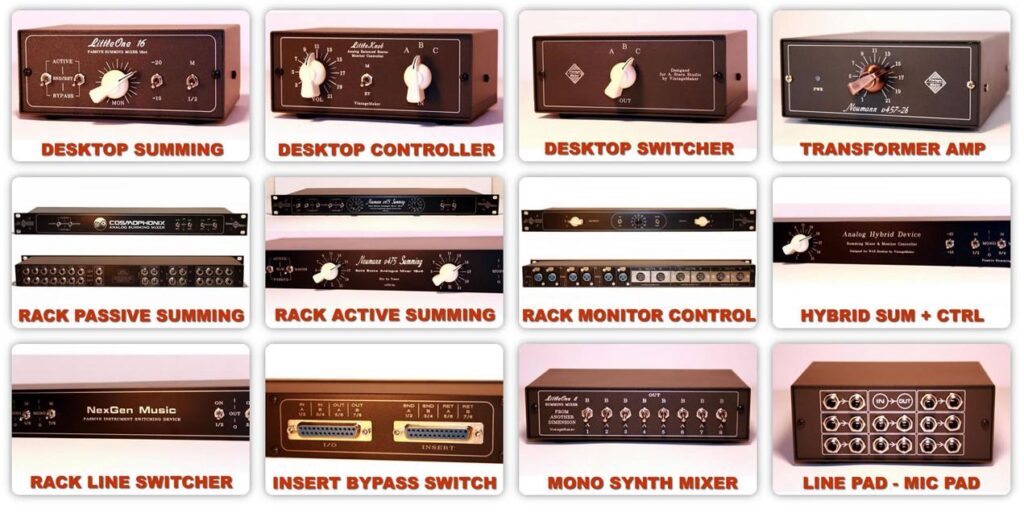Analog Summing Mixer Harmonics – Transformer Color Sound
Headroom – Sweet spot – Harmonics
Customer says: I fed my converters with the hottest signal in the center of the panorama and started automating the faders around it. Soon enough, the magic happened: the summing box started purring like a happy big cat and I knew that was the sound I always struggled to reach, the famous and legendary “warmth and openness of analogue” I so many times read about. “The analogue fat warmth sweetspot”.
- Matrix Summing Mixer
Why use an analog summing mixer?
1. Because you want to sound like pro!
2. Good sound sells and make best first impression of your music.
3. No digital harshness, distortion and squashed sound like with home computer.
4. The VintageMaker electronic circuit design is optimized to provide sufficient headroom to accommodate the signals from a large number of channels, as well as to maintain a sufficiently low noise floor
While a digital system rounds off all values for level, pan, eq-ing and compression, the analog summing technique operates with an infinitely high resolution, causing no rounding errors or digital distortions. The analog domain offers a number of great advantages compared to the simple DAW bounce.
- lawo summing mixer
- under construction summing
Analog summing advantages ?
1. In the analog world, there are no 0s and 1s, only voltages.
2. These complex sinusoidal voltages include harmonics and other elements.
3. Analog summings are producing 1st, 2nd, 3rd etc. harmonics as well as saturation/rounding peaks which makes sound so called warmer, fatter, richer.
4. It provides headroom buffer zone for harmonics, transients or loud sounds without risking clipping, which result a more dynamic open and wide, depth 3D sound.
When mixing on a computer, many prefer to sum the tracks in the analog domain, which can result in more depth of field and a wider, more defined stereo image. I hear phrases like “more depth and separation,” or “more rounded/warm low end”, bass is round and fat, middles are intensive but pleasant, trebles are nice and silky.
A sound engineer described as follows: the digital mixing is a mathematical summing, for example 1+1=2 (exact 2). When you mix in analog: 1+1=2,05 because your tracks are summed as sinusoidal voltages + as well as adding beneficial harmonic distortion the “pleasant harmonics”, rounds, transparency and more spatial depth.
How to hit that harmonic distortion?
- summing mixer inside neumann
- sweet spot analog summing
Analogue Warmth
Heat Factors
- Harmonic and non‑harmonic distortions of summing network over nominal level
- Active amp circuit, transformers and inductors or solid‑state devices.
- Different external processors, amplifiers, tube amps.
Transformers and tubes produce both even and odd harmonics.
There is a popular misconception that transformers produce odd harmonics and that tubes produce even harmonics. This simply is not true because both devices produce both types of harmonics by different way and ratios.
- haufe transformer analog studio
Harmonic Distortion – The colour factor
How to hit the analog harmonic distortion on the PASSIVE side of summing?
Simply boost up your DAW output Level (master fader) – and you get some “nice” distortion because you’re pushing the SUMMING INPUTS (SUM BUS) Passive side of Summing Mixer – quite a bit OVER its nominal level. (after that gain up the summed signal by your internal amp or external mic preamps or DAW mic preamps)
Comment:
Many people don’t know this, or they don’t care about proper gain staging, however it is the one of the most significant and important part of analog mix procedure.
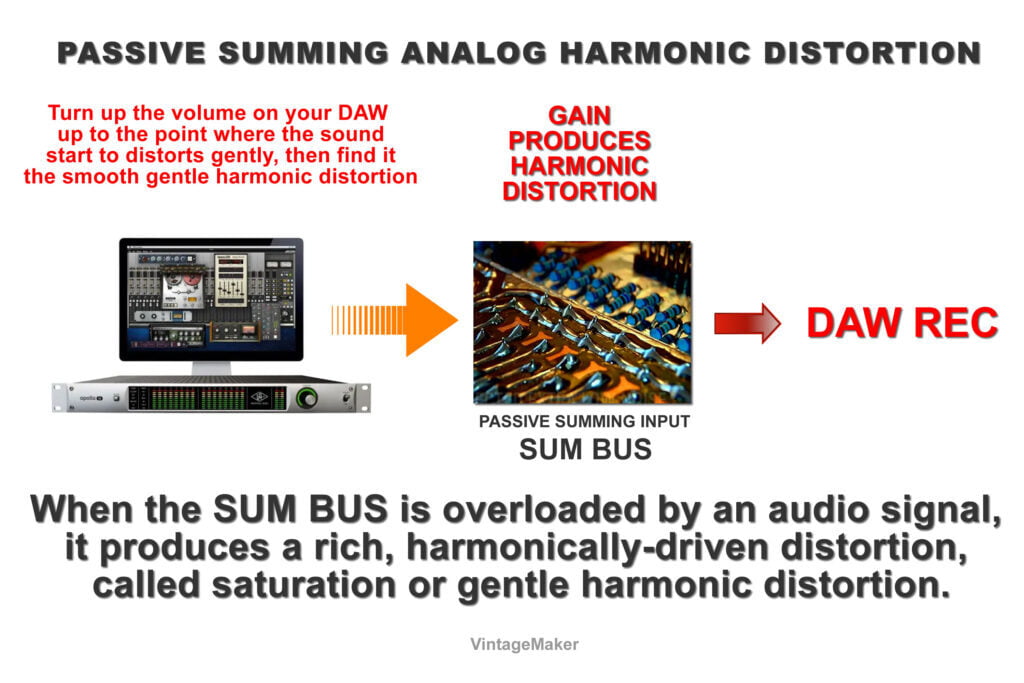
Advantages over nominal level in order: IN—>SUM BUS–>AMP–>OUT
1. Passive summing SUM BUS side (Active or Passive summing mixer)
- creates harmonic and non‑harmonic distortion – analog nonlinearities = pleasant distortion
- pleasant gentle analog distortion creates “nice” harmonics
- harmonics extend up – multiples the sound fundamental frequency
- extended frequency spectrum make the sound more musically “colored” sound
2. Active summing amp side (Placed after SUM BUS – passive summing network)
- uplift harmonics – (amplify) harmonics generated by – passive summing side
- excite harmonics – (multiple) even and odd harmonics by – transformers
If you have passive (not active) summing – you can boost or attenuate harmonics by:
- your mic preamps of your audio interface
- your line-level inputs of your audio interface
- your outboard preamps (different) color change in the sound
Harmonics multiples the sound fundamental frequency – that psychoacoustically excite the overall timbre, adding to sound:
- Color
- Depth Presence
- Character
- Warmth
Analog distortions
- First order distortion is essentially the frequency response.
- Second order distortion is even harmonics
- Third order distortion is odd harmonics.
When the SUM BUS is overloaded by an audio signal, it produces a rich, harmonically-driven distortion, called saturation gentle harmonic distortion.
- harmonic distortion summing
- neumann transformer
- audio transformer summing mixer

Gain staging from your DAW -Hit The “Sweet Spot”
“Gain staging is like pulling the focus of a camera lens”
Unity Gain
What’s the gain stage?
It’s every point at which you can adjust the amplitude of your out signal by trim knobs, input and output gain controls whether in a plugin or hardware, your mixer faders, the volume controls on your instruments, and more. They all are meant to work in harmony so each piece of equipment in the signal chain receives the signal at the correct volume to maintain the highest resolution possible.
How to find the Sweet Spot ?
So it’s a little more complex, the point is that You need to “adjust” levels from each side (DAW – OUT/SUM – OUT/ MICPRE – GAIN) until you find the best signal ratio / settings / sound quality. Find the sweet spot in this RANGE – where the harmonic distortion starts gently and it’s about right. Proper gain-staging = sweet spot , also 0dBVU marks the device’s ‘sweet spot’ range.
SET DAW OUTPUT LEVEL (reduce or increase): Boost DAW output levels to induce harmonic distortion on the summing input.
SET SUMMING AMP LEVEL (reduce or increase) [if active summing]: Adjust the summing amp level to achieve the desired effect.
SET MIC PREAMP LEVEL (reduce or increase) [if passive summing]: Modify the mic preamp level for passive summing configurations.
What is the Headroom?
- Headroom is the point “the safe place” where your transients are not damaged.
- Headroom is how much room has your audio signal has before it starts to get compressed and distorted.
- It provides buffer zone for harmonics, transients or loud sounds without risking clipping, which result a more dynamic open and wide, depth 3D sound.
- It provides space for Gentle Harmonic Distortion (harmonic and non‑harmonic distortions – analog nonlinearities)
You know – 0db = clipping mess if you go past it in digital, and in analog 0db is perfectly fine and you’ll have like 15-20 db of “headroom”
In digital and analog audio, headroom refers to the amount by which the signal-handling capabilities of an audio system exceed a designated nominal level.[1]Headroom can be thought of as a safety zone allowing transient audio peaks to exceed the nominal level without damaging the system or the audio signal, e.g., via clipping. (wikipedia)
- analog digital headroom summing
- analog transformer summing mixer
Boosting DAW Output Level
-18 dBFS to get 0 dBVU
In the analogue world ‘0’VU ” mostly corresponds with a level of +4dBu, while the max capacity of most analogue gear is rated about +22dBu, also resulting in a headroom of (22-4) 18dB.
Why 18dB?
Because audio signals can have transients that can go up to 18dB above the “body” of the signal.
These transients determine the sonic integrity of a sound
- Set your digital-to-analog converters at 0 dBu / -18 dBFS, it is where they perform their best and you pack the bits full of as much resolution as possible.
- Set your DAW levels around -18 dBFS to get 0 dBVU when going into the analog summing.
- The ultimate goal here is to always be hitting slightly your summing inputs over its nominal level (over 0 dBu / -18 dBFS.)
Youtube: +4 dBu vs -10 dBV Audio Signal Levels
How to Connect DAW to Summing Mixer ?
Before connect DAW to summing (see youtube)
- Do a Loop back test to find your sound card Unity Gain
- At the same time you can apply this method for proper cable testing
Connect you summing (see diagram)
8 channel connection example:
- DAW out 1Left /2Right —- SUM input 1Left /2Right
- DAW out 3Left /4Right —- SUM input 3Left /4Right
- DAW out 5Left /6Right —- SUM input 5Left /6Right
- DAW out 7Left /8Right —- SUM input 7Left /8Right
Basic signal routing from DAW sequencer program – Cubase example (youtube)
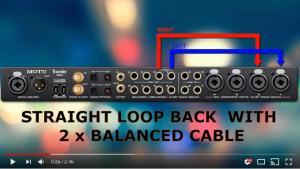
- connect mixer to computer main rec and monitor out
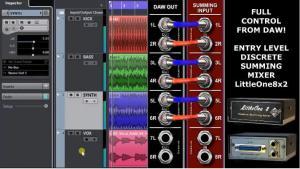
Do not find your Studio Gear?
Don’t worry! Just inform me about your requirements!
Addenum
1. Gain Staging (passive side)
- plug and play
70% of users use this method because they do not know the potential of analog summing.
*it buys, connects and is happy with, because their mix sounds more better, more 3D sound, spatial dept, the highs and lows sounds better etc.
Its because physics of analog domain – the components add artifacts to the signal. This operation is simply performed by adding the instantaneous signal voltages together.
- advanced – like a pro
You know 0db = clipping mess if you go past it in digital, and in analog 0db is perfectly fine and you’ll have like 15-20 db of “headroom” to play!
*Headroom is how much room your audio signal has before it starts to get compressed and distorted.
- First of all You need to reach the harmonic distortion on passive side, for that simply go over its nominal level – where the harmonic distortion starts gently and it’s about right, depend of music production.
- For example, if you mix a techno, or Glitch Hop, Dubstep, Drum & Bass you have to overdrive summing inputs to get a “dirty” distortion.
If you mix acoustic jazz material just “kiss” the harmonic distortion – gently.
It basically impossible to do that ITB [In-The-Box] over 0dB starts to distort during gain staging.
2. Panning Instruments
- Analog summing – by Headroom – it provides more space in the stereo field.
- Find the right place of Your instruments – where they sit better in the whole mix – separation
- In a good stereo mix, each instrument needs clarity, balance, separation, and its own space in the stereo field.
3. Final gain staging:
Sweet spot – use gain makeup by Internal summing amp or by a transparent DAW micpre, DAW instrument input or or Your favorite external preamp for saturation / amplify the HARMONICS already generated in the passive side.
Here comes the Magic: Your mixes will start to sound dynamic open and wide, just like the good old analog days:)
That’s pure physics nothing special.If you understand / learn the principles of analog summing then, you will be happy with.Paul taylor


